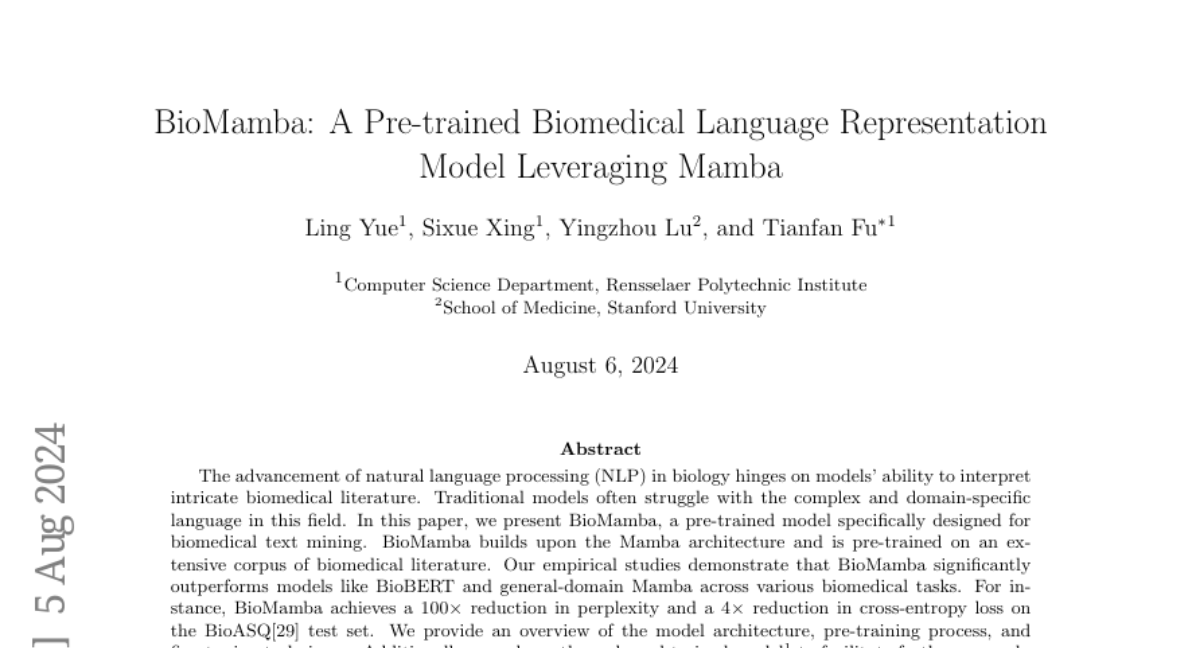BioMamba: A Pre-trained Biomedical Language Representation Model Leveraging Mamba
Ling Yue, Sixue Xing, Yingzhou Lu, Tianfan Fu
2024-08-06

Summary
This paper introduces BioMamba, a specialized language model designed to better understand and analyze complex biomedical texts.
What's the problem?
Traditional language models often struggle with the complicated language used in biomedical literature, making it hard for them to accurately interpret important information. This limitation hinders advancements in natural language processing (NLP) within the field of biology.
What's the solution?
BioMamba is built on the Mamba architecture and is pre-trained on a large collection of biomedical literature. This specific training allows it to capture the unique patterns and terminology found in biomedical texts. The research shows that BioMamba performs significantly better than other models like BioBERT, achieving impressive results on various biomedical tasks, such as reducing perplexity and cross-entropy loss, which are measures of how well a model predicts text.
Why it matters?
BioMamba is important because it enhances the ability of AI to process and understand complex biomedical information. This improvement can lead to better tools for researchers and healthcare professionals, ultimately aiding in medical research and improving patient care.
Abstract
The advancement of natural language processing (NLP) in biology hinges on models' ability to interpret intricate biomedical literature. Traditional models often struggle with the complex and domain-specific language in this field. In this paper, we present BioMamba, a pre-trained model specifically designed for biomedical text mining. BioMamba builds upon the Mamba architecture and is pre-trained on an extensive corpus of biomedical literature. Our empirical studies demonstrate that BioMamba significantly outperforms models like BioBERT and general-domain Mamba across various biomedical tasks. For instance, BioMamba achieves a 100 times reduction in perplexity and a 4 times reduction in cross-entropy loss on the BioASQ test set. We provide an overview of the model architecture, pre-training process, and fine-tuning techniques. Additionally, we release the code and trained model to facilitate further research.